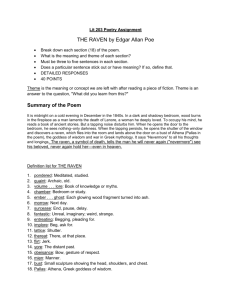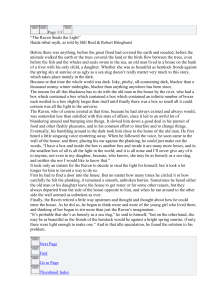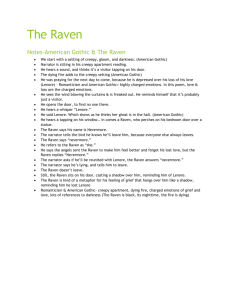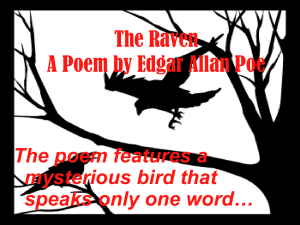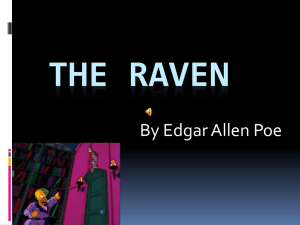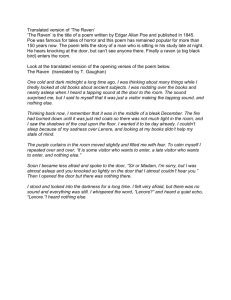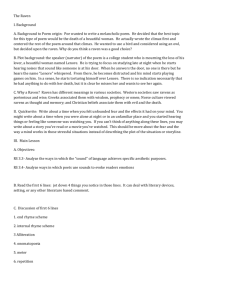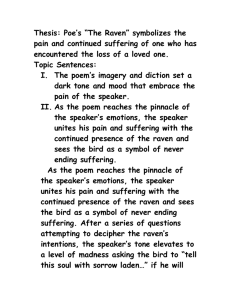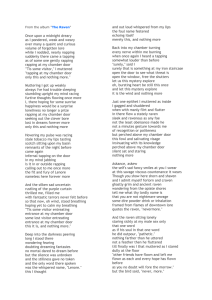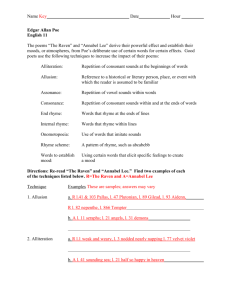PROMPT TWO Choose one short story and one poem from the 19th
advertisement
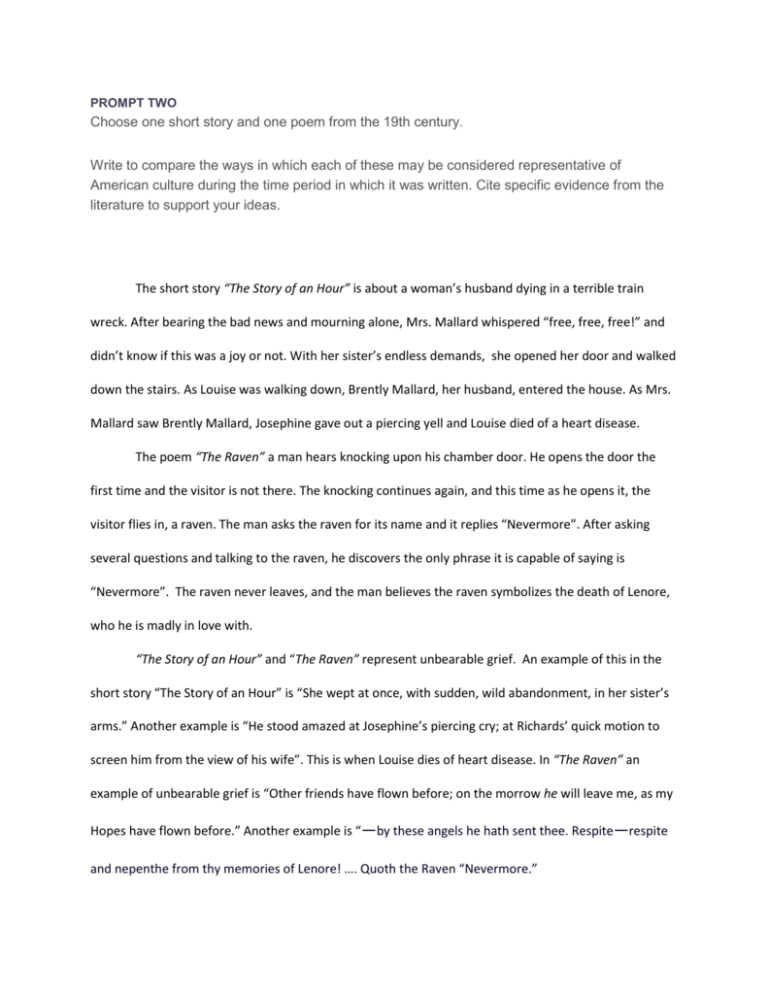
PROMPT TWO Choose one short story and one poem from the 19th century. Write to compare the ways in which each of these may be considered representative of American culture during the time period in which it was written. Cite specific evidence from the literature to support your ideas. The short story “The Story of an Hour” is about a woman’s husband dying in a terrible train wreck. After bearing the bad news and mourning alone, Mrs. Mallard whispered “free, free, free!” and didn’t know if this was a joy or not. With her sister’s endless demands, she opened her door and walked down the stairs. As Louise was walking down, Brently Mallard, her husband, entered the house. As Mrs. Mallard saw Brently Mallard, Josephine gave out a piercing yell and Louise died of a heart disease. The poem “The Raven” a man hears knocking upon his chamber door. He opens the door the first time and the visitor is not there. The knocking continues again, and this time as he opens it, the visitor flies in, a raven. The man asks the raven for its name and it replies “Nevermore”. After asking several questions and talking to the raven, he discovers the only phrase it is capable of saying is “Nevermore”. The raven never leaves, and the man believes the raven symbolizes the death of Lenore, who he is madly in love with. “The Story of an Hour” and “The Raven” represent unbearable grief. An example of this in the short story “The Story of an Hour” is “She wept at once, with sudden, wild abandonment, in her sister’s arms.” Another example is “He stood amazed at Josephine’s piercing cry; at Richards’ quick motion to screen him from the view of his wife”. This is when Louise dies of heart disease. In “The Raven” an example of unbearable grief is “Other friends have flown before; on the morrow he will leave me, as my Hopes have flown before.” Another example is “—by these angels he hath sent thee. Respite—respite and nepenthe from thy memories of Lenore! …. Quoth the Raven “Nevermore.”
